Probiotic supplements are everywhere these days, with brands and scientists alike excited about their potential. Accumulating research links a well-balanced microbiome to benefits like better digestion, improved immunity, and even mental well-being. (1)
If you’re here, you’ve probably heard the buzz and want to know which products are worth your time. Bioma Probiotics stands out from the pack by promising to balance your gut and, in turn, support weight loss—who wouldn’t want that?
But does it really work? In this Bioma Probiotics review, I’ll break down the science behind its ingredients, explore its potential benefits, and help you decide if it’s worth the investment—especially if weight loss is your goal.
Medical disclaimer: This article is intended for educational and informational purposes only. It is not intended as a substitute for medical advice. For health advice, contact a licensed healthcare provider.
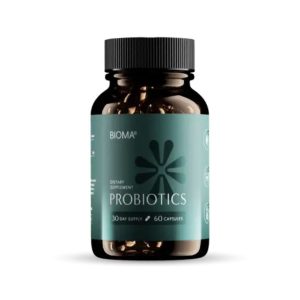

Key product features
What you should know
Bioma Probiotics is a synbiotic supplement that combines probiotics, prebiotics, and postbiotics to support gut health, improve digestion, and aid weight loss efforts. Its formula includes well-researched strains of Bifidobacterium and ingredients like XOS prebiotics and tributyrin postbiotics to promote a balanced gut environment. Here are the important things to know.
- Bioma’s formula contains Bifidobacterium strains that may boost immunity, reduce inflammation, and improve digestion. But, the proprietary blend lacks the transparency needed to identify how well it works.
- At $79.99 for a 30-day supply, Bioma is more expensive than many alternatives. While bulk discounts and subscriptions help, some customers feel it isn’t worth the price.
- This product is a strong option for people following a healthy diet who want to boost their weight management efforts by improving gut and digestive health.
- We like that this product protects the live bacteria strains using delayed-release capsules and freeze-dried probiotics. As a bonus, these features mean it doesn’t require refrigeration.
- We confirmed with Bioma’s customer service that this product is third-party tested. Plus, it’s made in an FDA-approved facility.
Bioma Probiotics overview
Bioma Probiotics is a dietary supplement designed to support gut health. Each two-capsule daily serving promises to rebalance your gut and boost your ability to lose weight. Let’s look at what’s inside and how it works.
Bioma ingredients and gut health probiotics benefits
Bioma labels its product as a probiotic, but it’s technically a synbiotic. Synbiotic supplements offer more complete gut health support by combining probiotics with prebiotics and postbiotics.
Here’s how these components work:
- Probiotics are good bacteria that live in your gut, supporting digestion, immunity, and overall health. (1)
- Prebiotics (mostly fibers) feed these bacteria, helping them grow and stay active. (2)
- Postbiotics are substances produced by probiotics that aid nutrient absorption and digestive tract health. (3)
We like Bioma’s formula because it contains three well-studied probiotic strains from the Bifidobacterium family: B. breve, B. longum, and B. lactis. Bifidobacterium are major players in good gut health, and low levels are linked to digestive issues like irritable bowel syndrome (IBS). (4)
Supplementing with these strains may help restore good bacteria levels and help improve your health by boosting immunity, reducing inflammation, and supporting good digestion. (5) If you’re struggling with digestive discomfort, B. lactis may specifically help with relieving bloating, gas, and constipation. (6)
Each two-capsule serving is said to provide 9 billion CFUs (colony-forming units), which indicates the number of live, active bacteria. (1) While this is a strong dose, Bioma’s proprietary blend doesn’t specify how much of each strain it contains. Without this information, we can’t say how effective the blend is since we can’t compare it to doses of strains used in clinical studies.
Bioma’s prebiotic ingredient is xylooligosaccharides (XOS), a sugar molecule found in fruits and vegetables. Bioma sources it from corn cob. Since your body can’t digest it, XOS travels to your lower intestine, where it feeds good bacteria—especially Bifidobacterium strains. (7) Research suggests it may also help manage blood sugar and cholesterol levels, which is important for people who are trying to lose weight or just stay healthy in general. (8)
Finally, Bioma includes tributyrin, a postbiotic that delivers short-chain fatty acids (SCFAs) to your gut. SCFAs may help strengthen the gut lining, protecting against harmful substances, like viruses, and improving symptoms like diarrhea and bloating. (9)
While animal studies support tributyrin’s benefits, human research is still new. One small study found that a 300 mg dose boosted SCFA levels in 21 days, but Bioma’s formula only provides 90 mg per serving, so its impact may be limited. (10) Still, it’s a promising ingredient for gut health.
Bioma offers a well-rounded formula with research-backed ingredients that may work better together than alone. However, the lack of transparency around specific strain doses makes it hard to fully judge its effectiveness.
Does Bioma Probiotics work for weight loss?
Bioma claims its gut health-boosting benefits help with weight loss, and they may be right. Some research suggests probiotics, like those in Bioma, can influence weight by affecting how your body absorbs nutrients, regulates hunger and metabolism-related hormones, and stabilizes glucose, which helps with possible hunger fluctuations. (11, 12)
People with more diverse gut bacteria tend to have better weight management, while those with less diversity often store more energy and have less hunger control. (11, 12) Early studies show that supplementing with Bifidobacterium strains, like those found in Bioma, may help improve gut diversity and aid weight loss. (11, 13)
That said, probiotics aren’t a magic fix. These studies also showed a reduction in the intake of calories and/or an increase in physical activity among participants. It’s unlikely you’ll see weight loss benefits from taking probiotics alone. (14) Plus, Bioma’s proprietary blend makes it hard to know if its formulation matches the effective doses seen in research. But if you’re already making healthy lifestyle changes, probiotics could be a helpful way to support your efforts.
How to take Bioma Probiotics
Bioma suggests taking two capsules daily with a full glass of water before breakfast. The capsules are vegan, gluten-free, and non-GMO, though they’re made in a facility that handles allergens like shellfish, fish, nuts, and soy.
We’re happy that Bioma uses delayed-release capsules to protect the probiotics from stomach acid, helping more bacteria reach your lower gut where they’re most effective. Further, there are prebiotics which help the survival process alone, even if you are not going to consume food close to intake.
Each bottle holds 60 capsules, enough for one month. However, it’s unclear if the 9 billion CFUs listed reflects the live bacteria count at the time of manufacture or expiration. Since probiotics must be alive to work, we usually recommend products that guarantee CFUs through the expiration date for full benefits.
Nonetheless, Bioma takes extra steps to protect its probiotics. The strains are freeze-dried, making them more resistant to heat and storage conditions, so no refrigeration is needed, which is a nice convenience in your daily routine. (15) The capsules also come in a dark glass bottle to block UV light that could damage the bacteria.
Testing and certifications
We confirmed with Bioma that its probiotic supplement is third-party tested. While the FDA requires supplement companies to be honest about their ingredients, they don’t check formulations for accuracy before products are sold. (16) Third-party testing means an independent lab ensures a product’s ingredients and dosages match the brand’s promises. The best supplement products provide this transparency.
Bioma is also made in an FDA-approved, GMP-certified facility, which ensures it meets high safety and manufacturing standards.
One issue is that Bioma’s official website claims to offer probiotics tailored to your health needs, but this is a bit misleading. You take a quiz, and based on your answers, they recommend one of their three standard supplements—not a unique formula.
Bioma Probiotics side effects
Probiotics and prebiotics, like those in Bioma, are generally low-risk, but individual responses can vary. Some people may experience worsened gastrointestinal symptoms, like gas or bloating. (1) Prebiotics, as fermentable fibers, can also cause abdominal discomfort.
If you have a weakened immune system, avoid probiotics, as they may increase your risk of infection. Additionally, probiotics can sometimes interfere with certain medications by affecting how they’re metabolized. (17, 18)
There’s little evidence of severe side effects from tributyrin, but research on it is still limited.
As with any supplement, it’s best to consult your doctor before starting. If side effects occur, work with your doctor to adjust your plan.
Cost and value
Bioma Probiotics are more expensive than average. A one-time purchase of a 30-day supply costs $79.99 or $2.67 per dose, much more than similar supplements. However, they often run sales and offer bulk discounts and subscriptions to help lower prices.
The return policy isn’t the most flexible. You have 14 days from your order date to request a return, which doesn’t give you much time to try the product. Plus, you’ll need to pay a $9 return shipping fee.
We do like that you get two free ebooks with your order on gut repair and anti-inflammatory diet. These extras show that Bioma understands the importance of a holistic approach to gut health and adds more value to the overall package.
What customers are saying
Over 1,000 Amazon customers rated Bioma Probiotic supplement a 3.7 out of 5 stars—around 50% of these customers like the healthy gut results they’re seeing from this product.
“Bioma Probiotics has transformed my gut health remarkably. It effectively alleviated bloating and improved my digestion. The unique combination of prebiotics, probiotics, and postbiotics works synergistically to promote a balanced gut environment, leading to better bowel movements and significantly less toilet paper usage. I’ve noticed a clean result with fewer digestive issues, enhancing my overall comfort and well-being. Highly recommend Bioma for anyone seeking effective gut health support!”
Robert, Amazon
Another customer, Sally, describes it as “surprisingly great,” saying she was “pleasantly surprised by this brand of probiotic. My digestion is noticeably better, my skin looks better, and I have lost weight (maybe 9 lbs. in two months of using it). The most noticeable effect for me is the level of detachment from food choices that I now have. I can consider what makes the most sense to eat and fuel my day rather than spinning headlong after an ill-advised craving.”
However, many customers find it overpriced for what it contains. A customer named Paige writes, “These work just as well as my regular probiotic supplement, which is way cheaper than these. These are 7x more expensive than my regular brand…I will not be purchasing them in the future.”
Several other customers feel this product doesn’t live up to its hype, with claims about weight loss and sugar cravings feeling like a scam, but everyone responds differently to supplements. Others report an increase in symptoms like bloating, gas, and diarrhea, which can be a side effect of starting a new probiotic formula. This is a good reminder that it’s important to discuss this product with your doctor.
Specs
| Active ingredients | Xylooligosaccharides (100 mg), probiotic blend (B. lactis, B. longum, B. breve) 9 billion CFUs, Tributyrin (90 mg) |
| Additional ingredients | Microcrystalline Cellulose, hypromellose, magnesium stearate, silicon dioxide |
| Daily dose | 2 capsules |
| Special diets | Vegan, gluten-free, keto-friendly, non-GMO |
Who Bioma Probiotics is recommended for:
- People who want to support their weight loss journey, including healthy diet and lifestyle changes, with a comprehensive gut health supplement.
- People seeking relief from symptoms like gas, bloating, and constipation. (1, 19)
- People who struggle to maintain a diverse diet, including probiotic and prebiotic-rich foods like yogurt, miso, buttermilk, fruits, and vegetables.
- People whose doctors have suggested they could benefit from taking probiotics.
- People who want the convenience of getting three gut-health-promoting ingredients in one product.
Who Bioma Probiotics is not recommended for:
- Immunocompromised individuals. (1)
- Preterm infants. (1)
- People with underlying medical conditions who have not consulted with their doctor. (1)
- People looking for a budget-friendly way to support gut health.
Expert opinion
We consulted with Victoria Burgess, Ph.D., CSCS, CISSN, a certified sports nutritionist, for her insight on this probiotic supplement:
“This probiotic boosts a good amount of CFUs, which help the survival rate through absorption, allowing for the most beneficial bacteria to enter the intestine. The fact that it is a synbiotic, which includes pre- and postbiotics as well, makes it a great all-around product. Pre- and postbiotics can be especially helpful for those who might not consume fibrous foods, to help with the ‘feeding’ and survival and health of the probiotics.”
Compare Bioma with other probiotics
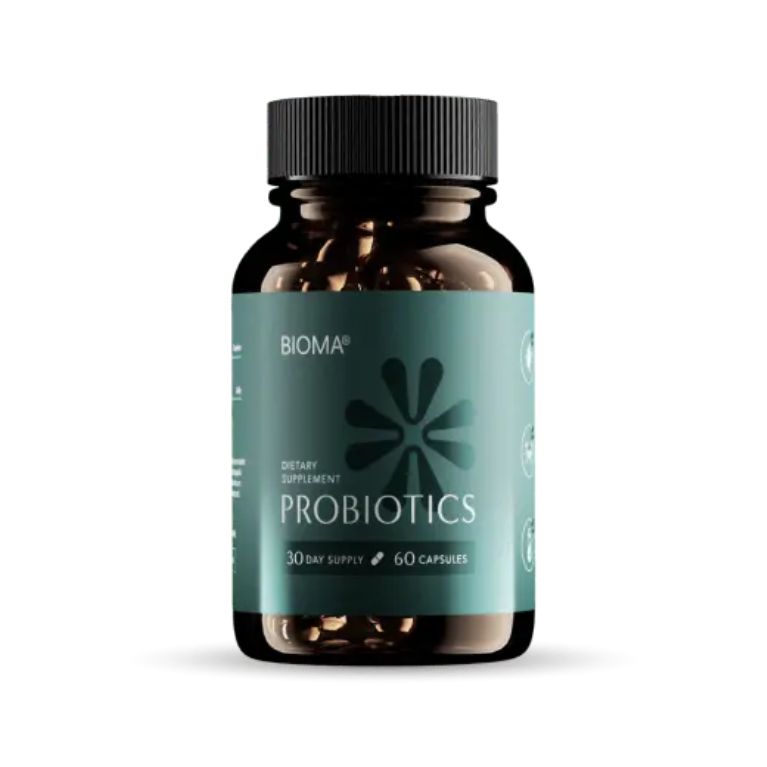
|
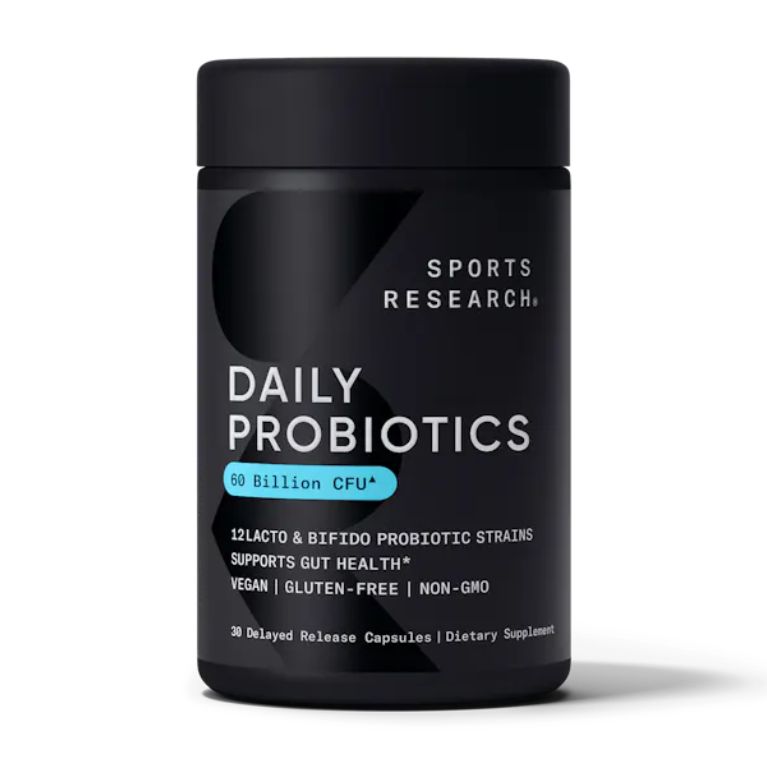
|
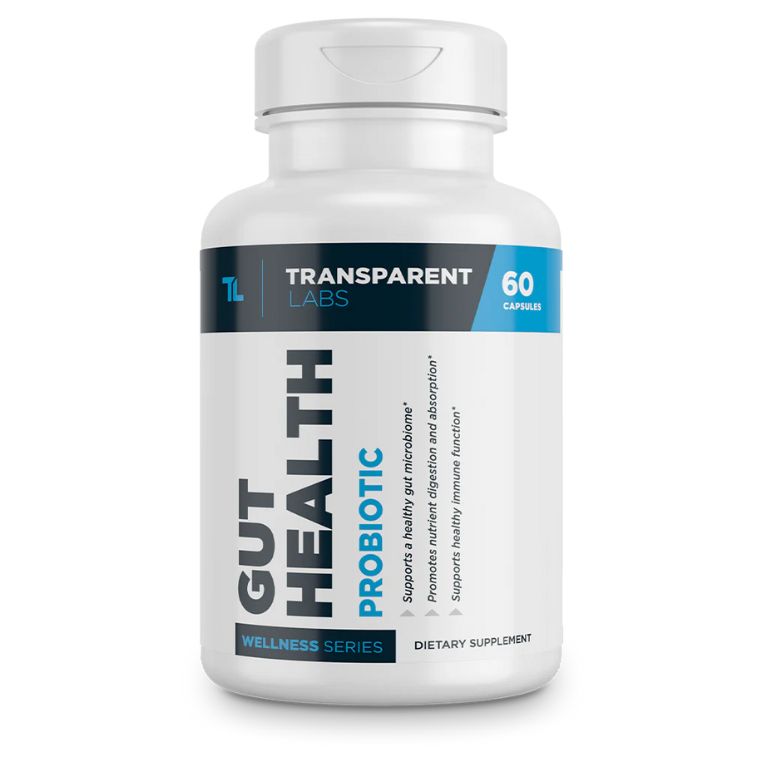
|
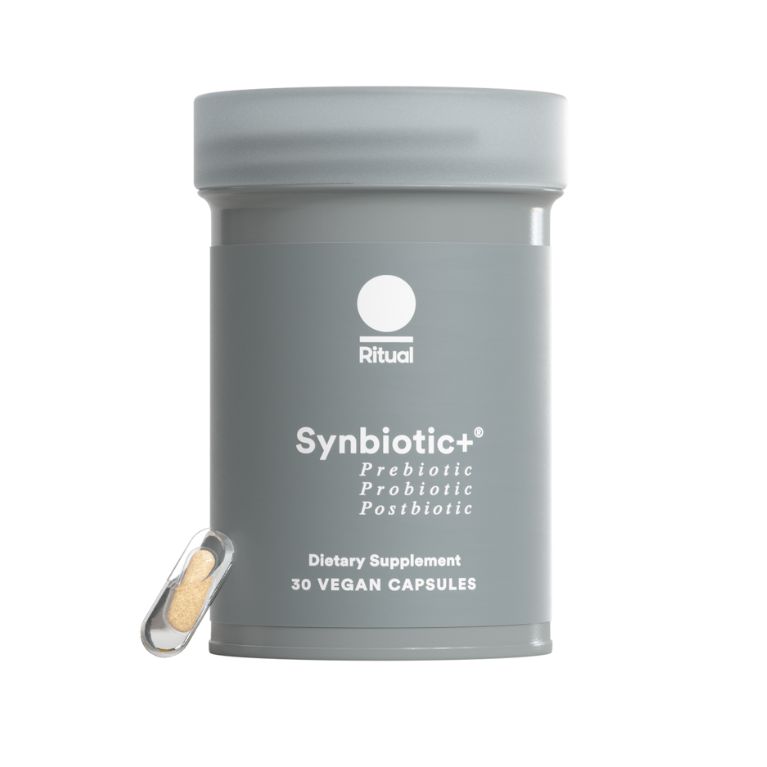
|
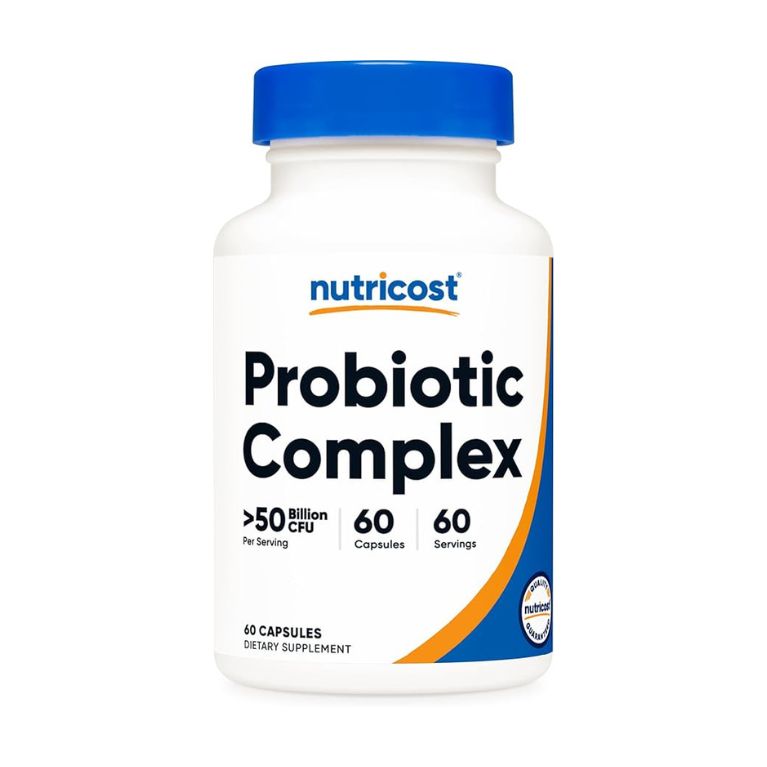
|
|
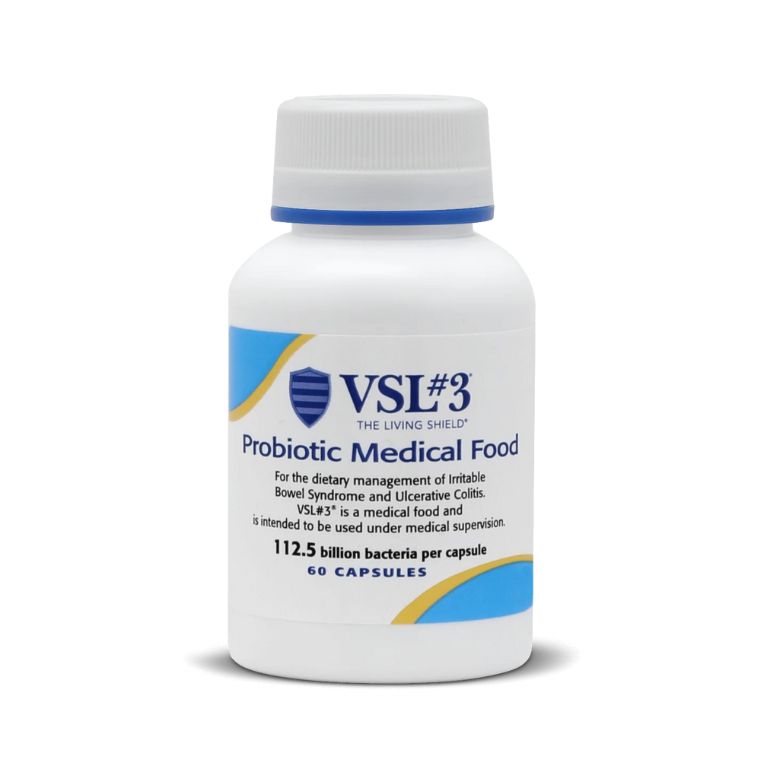
|
|
| Bioma Probiotics | Sports Research Daily Probiotics | Transparent Labs Gut Health | Ritual Synbiotic+ | Nutricost Probiotic Complex | Legion Athletics Biome | VSL#3 Capsules | |
| Rating | |||||||
| Cost per serving | $2.67 | $0.83 | $1.53 | $1.80 | $0.25 – $0.37 | $1.67 | $2.20 |
| Daily dose | 2 capsules | 1 capsule | 2 capsules | 1 capsule | 1 capsule | 2 capsules | 2 capsules or 1 powder packet, up to 4 times |
| Key ingredients | Bifidobacterium, tributyrin, XOS | 12 probiotic strains, prebiotics | 10 probiotic strains, prebiotics | 2 probiotic strains, prebiotics, postbiotics | 10 probiotic strains | 3 probiotic strains | 8 probiotic strains |
How we test probiotic supplements
We use specialized criteria to score probiotic products, separate from our broader nutrition product and supplement methodology. Each product is rated on a scale of 1 to 5 across seven core categories, with category weights reflecting their importance. These scores are combined to calculate an overall rating, with 5 being the highest possible score. Some products may also earn bonus points for exceptional features. You can read our full probiotics testing methodology here.
Cultures contained–25%
The effectiveness of a probiotic product depends on the strains it contains, as different probiotic strains offer various health benefits. For example, some strains support digestive health, while others may help with immune function or address specific health conditions such as irritable bowel syndrome (IBS). It’s important to select probiotic strains that align with your health goals and needs. Probiotics are identified by their specific strain, which includes the Genus–or classification, or family–and species, which is a further identification within the “family” along with a strain designation. We’ve identified specific probiotics most extensively studied in clinical trials, demonstrating their effectiveness for specific health conditions.
Here are the key probiotic strains we consider:
Lactobacillus:
- rhamnosus
- acidophilus
- plantarum
- paracasei
- casei
- salivarius
- Fermentum
Bacillus:
- subtilis
- coagulans
Bifidobacterium:
- lactis
- bifidum
- breve
- animalis
- longum
Saccharomyces:
- boulardii
Streptococcus:
- thermophilus
Probiotics containing these strains in their formulations received higher marks due to their proven benefits and effectiveness in clinical studies.
Proprietary culture blend–25%
To make an informed choice when selecting probiotic supplements, it’s important to look for products that provide clear information about the specific strains of probiotics contained in the formulation. Proprietary blends often do not disclose the specific strains and their respective concentrations used in the product. Consumers cannot make informed decisions about the probiotic supplement without knowing the specific strains and their concentrations. Different probiotic strains have different health benefits, and the effectiveness of a product depends on the specific strains used and their viability.
Encapsulated with food source–20%
Encapsulating probiotics with a food source like inulin can help protect the beneficial bacteria from harsh stomach acids and bile, increasing their chances of survival as they pass through the digestive system and reach the intestines where they are needed. This encapsulation can provide a protective barrier, potentially extending the shelf life of the probiotic supplement.
Live and active bacterial cultures–15%
According to an expert panel on probiotics and prebiotics, “Probiotics are live microorganisms which when administered in adequate amounts confer a health benefit on the host.” While most of the data support live and active cultures, some data suggest dead cultures could exert benefit as well, though they aren’t labeled as such and may be referred to as postbiotics or parabiotics. Since the “live and active cultures” number is what’s stated on labels for probiotics, if at all, we evaluate products based on whether they include a statement on their label confirming the presence of viable microorganisms.
Colony Forming Units (CFU) at the end of shelf life date–10%
In the context of probiotics, CFUs represent the number of live microorganisms, typically bacteria, present in a probiotic supplement at the end of its shelf life. This value indicates the product’s potency and ability to deliver a sufficient quantity of live, beneficial microorganisms to exert their intended health effects. Generally speaking, it is better to have more strains and a variety of them, as our microbiome consists of approximately 38 trillion microbes. Therefore, it is best to have at least 20 billion or more CFUs, equivalent to a drop of water on a vast sea.
- Under 1 Billion
- 1 Billion – 4.9 Billion
- 5 Billion – 9.9 Billion
- 10 Billion – 19.9 Billion
- 20 Billion+
Type–5%
Probiotic supplements come in various forms, each with its own advantages and considerations. The choice of which form is best depends on individual preferences, needs, and factors such as convenience and lifestyle.
- Capsule
- Tablet
- Powder
- Enteric-coated
- Gummy or chewable
Certifications
Testing certifications show whether a dietary supplement contains what the brand says it contains in the doses advertised (potency).
Here are the certifications that stand out:
- Third-party testing
- NSF
- U.S. Pharmacopeia (USP)
- Labdoor
- Informed Sport
- Informed Choice (ICFS)
- Informed Ingredient
Bonus points
To recognize innovation and encourage healthy competition, we incorporate bonus credits into our scores. Bonus points provide a small boost to the product’s overall score and are equally weighted.
Sustainable packaging
Given our commitment to sustainability, brands offering sustainable packaging receive bonus credits. For example, protein containers are usually large, plastic, one-, two-, or five-pound tubs. Any company that offers sustainable packaging gets bonus credits because fewer plastic tubs end up in landfills.
FAQs
Does Bioma really work?
Is Bioma FDA-approved?
No, Bioma isn’t FDA-approved. The FDA doesn’t approve supplements.
These statements have not been evaluated by the Food and Drug Administration. These products are not intended to diagnose, treat, cure, or prevent any diseases.
Our experts
Victoria Burgess, Ph.D., CSCS, CISSN
Victoria Burgess earned her Ph.D. in Health and Human Performance from Concordia University Chicago and holds her NSCA CSCS and Certified Sports Nutritionist (CISSN). She is an adjunct professor in the Human Performance and Nutrition department at Concordia University Chicago & Parker University, where she teaches undergraduate, graduate, and doctoral-level courses.
Joana Neziri, M.S., NASM CPT
Joana is a writer, editor, and content strategist focusing on nutrition, fitness, and all things health. After earning a master’s degree in business from the University of North Florida, she began a career in research and digital marketing.
Jessica Coulon
Jessica is a contributing editor and writer who specializes in fitness, health, nutrition, and science content. Previously, she was an editor for Popular Mechanics and Bicycling, where she covered pro cycling news, wrote how-to guides, and tested all the latest and greatest bike gear. She was also a regular shoe tester and contributor for Runner’s World. You can often find her skiing or riding her mountain bike, and racing with the F1RE female enduro team.
Kelly Uhler
Kelly has a multifaceted background in elder care, health care, and copywriting. She has worked for organizations such as A Place For Mom and Homecare.com, which gave her the opportunity to work closely with families, providing reliable information to help them make informed decisions about their loved one’s health, safety, and quality of life.

Meghan Novoshielski
MS, RDN, Fortune Recommends Nutrition Writer
About Author
Meghan is an expert Registered Dietitian Nutritionist (RDN) with a Master’s degree in Nutrition Science and over 15 years of experience in the nutrition and wellness field. A sought-after health writer, she’s committed to empowering people to lead their healthiest lives by delivering trustworthy, practical, and engaging nutrition content.
References
- National Institutes of Health. Probiotics. Nih.gov. Published November 3, 2023. https://ods.od.nih.gov/factsheets/Probiotics-HealthProfessional/
- Hill C, Guarner F, Reid G, et al. The International Scientific Association for Probiotics and Prebiotics consensus statement on the scope and appropriate use of the term probiotic. Nature reviews Gastroenterology & hepatology. 2014;11(8):506-514. doi:https://doi.org/10.1038/nrgastro.2014.66
- Salminen S, Collado MC, Endo A, et al. The International Scientific Association of Probiotics and Prebiotics (ISAPP) consensus statement on the definition and scope of postbiotics. Nature Reviews Gastroenterology & Hepatology. 2021;18(9). doi:https://doi.org/10.1038/s41575-021-00440-6
- Feng Y, Duan Y, Xu Z, et al. An examination of data from the American Gut Project reveals that the dominance of the genus Bifidobacterium is associated with the diversity and robustness of the gut microbiota. MicrobiologyOpen. 2019;8(12). doi:https://doi.org/10.1002/mbo3.939
- Chen J, Chen X, Ho CL. Recent Development of Probiotic Bifidobacteria for Treating Human Diseases. Frontiers in Bioengineering and Biotechnology. 2021;9. doi:https://doi.org/10.3389/fbioe.2021.770248
- Dale HF, Rasmussen SH, Asiller ÖÖ, Lied GA. Probiotics in Irritable Bowel Syndrome: An Up-to-Date Systematic Review. Nutrients. 2019;11(9). doi:https://doi.org/10.3390/nu11092048
- Valladares-Diestra KK, de Souza Vandenberghe LP, Vieira S, et al. The Potential of Xylooligosaccharides as Prebiotics and Their Sustainable Production from Agro-Industrial by-Products. Foods. 2023;12(14):2681. doi:https://doi.org/10.3390/foods12142681
- Yan F, Tian S, Du K, Xue X, Gao P, Chen Z. Preparation and nutritional properties of xylooligosaccharide from agricultural and forestry byproducts: A comprehensive review. Frontiers in Nutrition. 2022;9. doi:https://doi.org/10.3389/fnut.2022.977548
- Blaak EE, Canfora EE, Theis S, et al. Short chain fatty acids in human gut and metabolic health. Beneficial Microbes. 2020;11(5):411-455. doi:https://doi.org/10.3920/bm2020.0057
- Grosicki G. Effects of 3-week Tributyrin Supplementation on the Gut Microbiome: A Pilot Study. Journal of the Academy of Nutrition and Dietetics. 2021;121(9):A23. doi:https://doi.org/10.1016/j.jand.2021.06.051
- Álvarez-Arraño V, Martín-Peláez S. Effects of Probiotics and Synbiotics on Weight Loss in Subjects with Overweight or Obesity: A Systematic Review. Nutrients. 2021;13(10):3627. doi:https://doi.org/10.3390/nu13103627
- Perna S, Ilyas Z, Giacosa A, et al. Is Probiotic Supplementation Useful for the Management of Body Weight and Other Anthropometric Measures in Adults Affected by Overweight and Obesity with Metabolic Related Diseases? A Systematic Review and Meta-Analysis. Nutrients. 2021;13(2):666. doi:https://doi.org/10.3390/nu13020666
- Ejtahed HS, Angoorani P, Soroush AR, et al. Probiotics supplementation for the obesity management; A systematic review of animal studies and clinical trials. Journal of Functional Foods. 2019;52:228-242. doi:https://doi.org/10.1016/j.jff.2018.10.039
- Czajeczny D, Kabzińska K, Wójciak RW. Does probiotic supplementation aid weight loss? A randomized, single-blind, placebo-controlled study with Bifidobacterium lactis BS01 and Lactobacillus acidophilus LA02 supplementation. Eating and Weight Disorders – Studies on Anorexia, Bulimia and Obesity. Published online August 14, 2020. doi:https://doi.org/10.1007/s40519-020-00983-8
- Buahom J, Siripornadulsil S, Sukon P, Sooksawat T, Siripornadulsil W. Survivability of freeze- and spray-dried probiotics and their effects on the growth and health performance of broilers. Veterinary World. Published online September 2023:1849-1865. doi:https://doi.org/10.14202/vetworld.2023.1849-1865
- National Institutes of Health. Office of Dietary Supplements – Dietary Supplements: What You Need to Know. ods.od.nih.gov. Published September 3, 2020. https://ods.od.nih.gov/factsheets/WYNTK-Consumer/
- Kothari D, Patel S, Kim SK. Probiotic supplements might not be universally-effective and safe: A review. Biomedicine & Pharmacotherapy. 2019;111:537-547. doi:https://doi.org/10.1016/j.biopha.2018.12.104
- Li Z, Li Z, Zhu L, et al. Effects of Xylo-Oligosaccharide on the Gut Microbiota of Patients With Ulcerative Colitis in Clinical Remission. Frontiers in Nutrition. 2021;8. doi:https://doi.org/10.3389/fnut.2021.778542
- World Gastroenterology Organisation (WGO). World Gastroenterology Organisation (WGO). Published 2017. Accessed October 29, 2024. https://www.worldgastroenterology.org/guidelines/probiotics-and-prebiotics/probiotics-and-prebiotics-english
